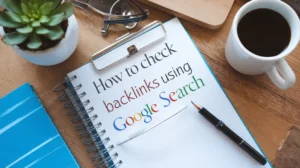Graphic design is everywhere: in the ads we see, the logos we recognize, and even the layouts of our favorite websites. But what exactly is graphic design? As a vital form of visual communication, it combines images, typography, and ideas to convey messages effectively to an audience. In this article, we’ll dive deep into the world of graphic design, exploring its definition, historical background, key elements, and applications across industries.
Table of Contents
Introduction to Graphic Design
Graphic design is both an art and a profession. It involves creating visual content to communicate messages, evoke emotions, and inspire action. Through the strategic use of images, colors, typography, and layouts, designers shape how audiences perceive information. This guide will provide a comprehensive understanding of graphic design, covering its definition, historical background, key components, and applications across industries. If you’re interested in a similar field, you might want to learn what web design is, as it shares many foundational principles with graphic design.
Defining Graphic Design
At its core, graphic design is about communication. Graphic design can be defined as “the art or profession of using design elements (such as typography and images) to convey information or create an effect.” According to the Interaction Design Foundation, graphic design is “a craft where professionals create visual content to communicate messages.” It’s a creative discipline with a structured approach that combines aesthetics and purpose.
A Brief History of Graphic Design
Graphic design has evolved tremendously over centuries, shaped by cultural movements, technological advancements, and shifting artistic trends. Here’s a quick overview of key milestones in its development:
Early Origins
The origins of graphic design can be traced back to ancient times. Early forms of graphic communication can be seen in cave paintings, hieroglyphics, and illuminated manuscripts. These visuals conveyed stories, religious teachings, and cultural values.
The Printing Press and Visual Information Revolution
In the 15th century, Johannes Gutenberg’s invention of the printing press revolutionized the distribution of visual information. For the first time, books and printed materials could be mass-produced, making them accessible to a wider audience and laying the groundwork for modern graphic design.
20th-Century Graphic Design and Bauhaus Influence
The 20th century marked the emergence of graphic design as a recognized profession. Movements like the Bauhaus in Germany emphasized functionality, simplicity, and geometric forms. These principles continue to influence modern design.
Get in Touch with Our Team

The Digital Revolution
The advent of computers and design software in the late 20th century transformed graphic design. With tools like Adobe Photoshop and Illustrator, designers could create, edit, and distribute digital designs, opening up new possibilities in visual communication.
Key Elements and Principles of Graphic Design
To understand graphic design, it’s essential to grasp the fundamental elements and principles that govern its creation. Let’s explore each of these components and how they contribute to effective design.
Key Elements of Graphic Design
- Line: Lines connect two points, guiding the viewer’s eye and creating structure in a design.
- Shape: Shapes define objects in space. They can be geometric (circles, squares) or organic, creating a visual hierarchy and adding depth.
- Color: Color evokes emotions, attracts attention, and conveys messages. The color palette of a design often reflects its tone and purpose.
- Texture: Texture is the perceived surface quality of an object. While it’s often subtle, texture can add depth and interest to a design.
- Typography: Typography is the arrangement and style of text. Effective typography enhances readability and sets the design’s tone.
Core Design Principles
- Balance: Balance creates stability in a design. It can be symmetrical, asymmetrical, or radial, depending on the visual composition.
- Contrast: Contrast highlights differences, making specific elements stand out. It adds emphasis and clarity to a design.
- Alignment: Proper alignment organizes elements, creating a clean and cohesive layout that’s easy to navigate.
- Repetition: Repeating elements, like colors or patterns, establishes consistency and unity within a design.
- Proximity: Grouping related items together visually reinforces relationships, improving information flow and comprehension.
These elements and principles work together to create designs that are not only visually appealing but also effective in communicating their intended messages.
Applications of Graphic Design
Graphic design is a versatile discipline, with applications spanning various fields and industries. Here’s a look at some key areas where graphic design plays a pivotal role:
1. Branding and Identity
Graphic designers create logos, color schemes, and other visual elements that represent organizations, giving them a unique identity that resonates with their audience. Branding requires consistency and creativity, as it shapes the public perception of a brand. For a deeper look at how visual identity and branding align with other digital marketing efforts, you may explore our services page.
2. Advertising and Marketing
In advertising, graphic design is crucial for crafting promotional materials such as brochures, posters, social media graphics, and digital ads. Good design can attract attention, communicate value, and persuade audiences to take action.
3. Web and User Interface (UI) Design
UI design focuses on creating visually appealing, user-friendly layouts for websites and applications. A graphic designer’s role in UI design includes choosing colors, typography, and layout arrangements that enhance the user experience. For related insights, check out our web design services.
4. Publication Design
Designers working in publication design create layouts for books, magazines, newspapers, and more. This involves arranging text, images, and other elements in a way that is visually engaging and easy to follow.
5. Packaging Design
Packaging design helps products stand out on store shelves and conveys important product information. Effective packaging can influence consumer choices and support a brand’s identity.
6. Environmental Design
Environmental design includes signage, wayfinding systems, and visual displays in physical spaces. It combines graphic elements with architecture and interior design to guide, inform, or inspire people in a specific environment.
Get in Touch with Our Team

The Role of a Graphic Designer
A graphic designer is responsible for bringing ideas to life through visual communication. Key responsibilities of a graphic designer include:
- Collaborating with Clients: Designers work with clients to understand their needs, objectives, and brand identity.
- Conceptualizing Visual Solutions: Designers brainstorm and create visual solutions that solve specific communication problems.
- Using Design Software: Graphic designers rely on software like Adobe Illustrator, Photoshop, and InDesign to create digital and print materials.
- Staying Updated: Graphic design is constantly evolving, so designers need to stay updated with industry trends, new tools, and emerging technologies.
A successful graphic designer combines technical skills with creativity, problem-solving, and adaptability to meet diverse design challenges. To view examples of past projects, visit our portfolio page.
Conclusion
Graphic design is more than just visuals; it’s a powerful tool for communication that influences how we perceive brands, products, and information. From its early roots in cave paintings to today’s digital masterpieces, graphic design has shaped our culture and daily experiences. Whether you’re a beginner or looking to deepen your knowledge, understanding the elements, principles, and applications of graphic design can provide a new appreciation for the artistry and strategy behind every visual you encounter.
For more information on graphic design and related topics, visit our blog and explore additional resources.








